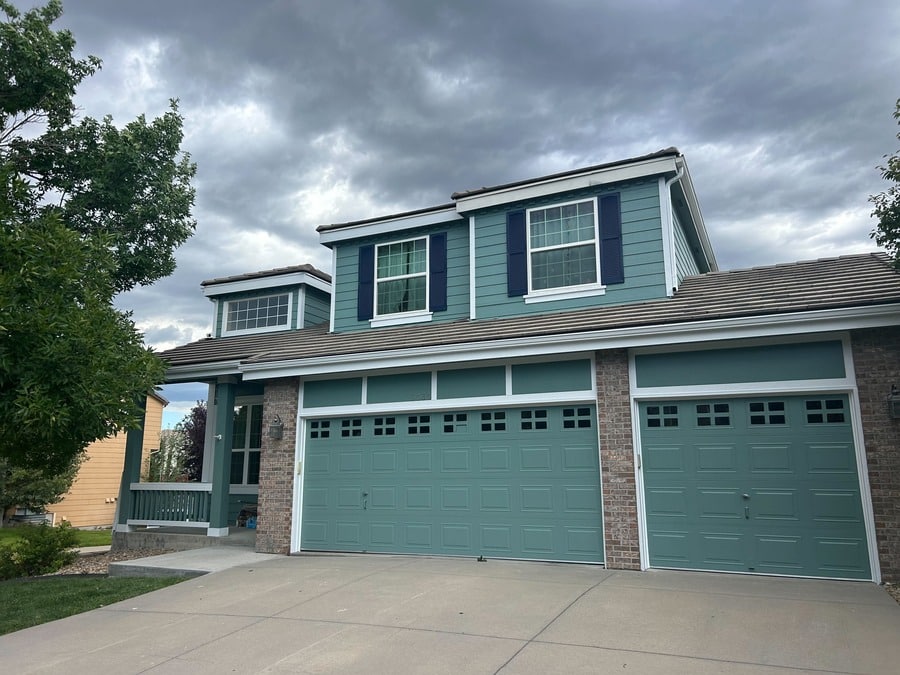Your home’s exterior is constantly exposed to changing weather elements. Over time, the paint on the exterior walls gradually degrades, compromising the aesthetic of your home and leaving the walls vulnerable to weather damage. Repainting your home helps maintain its curb appeal and prevent further damage. But, how often should you paint the exterior of your house? Knowing when to repaint requires a thorough understanding of what your property needs. This content discusses the key factors to consider when deciding to repaint. We will also highlight the common signs of paint damage, maintenance tips, and more.
Signs That You Need to Repaint Your House’s Exterior
Below are some telltale signs that your home’s exterior needs to be repainted:
- Peeling, cracking, or bubbling paint: This is an obvious signal that your paint is aging. These signs mainly occur when paint begins to lose its elasticity, which is a common phenomenon as the paint ages over time. When the paint peels, cracks, or bubbles, it often allows water to get trapped inside, causing more damage to the underlying material.
- Fading or chalking: Over-exposure to harsh UV rays leads to a dull and faded appearance. As the fading continues, the paint gradually breaks down into a powdery residue that comes off the surface easily when rubbed.
- Mold, mildew, or water stains: If you notice dark patches or water marks on the surface of your walls, it is an indication of water damage. This happens when the paint wears off, exposing the surface to moisture. These signs are more common on wooden surfaces, such as siding. If you do not repaint, the moisture will continue to accumulate, leading to increased mold and water stains.
- Warped or damaged siding: When the paint layer on the siding cracks or peels, water easily penetrates the finish and reaches the underlying surface. The wooden surface absorbs moisture, which can result in warping or rotting of the siding boards.
- Exposed wood or raw materials: Any area where paint starts to deteriorate will reveal exposed metal or wood. This leaves the surface material unprotected and vulnerable to rot or corrosion. Even a small exposed area can cause damage to the surrounding material quickly.
Factors That Affect Repainting Frequency
Some of the common factors that determine how frequently your home needs repainting include the following:
Climate and Weather Conditions
Your local weather and climate conditions influence how often you need to repaint your home. If you live in a region with intense sun exposure, heavy rainfall, or extreme cold, you may need to repaint more frequently. Harsh weather conditions accelerate paint degradation, resulting in a frequent need for maintenance.
Quality of Previous Paint Job
The durability of your existing paint is influenced by the application method and surface preparation. If your previous paint job was properly done utilizing professional-grade materials and proper techniques, your paint will last longer without needing frequent reapplication.
Color Selection
Since exterior paint must withstand various weather elements, it needs to be high quality to provide weather resistance. If you have chosen paints specially formulated for exterior use, they will offer lasting durability, requiring less frequent repainting.
How Often Should You Repaint Your Home’s Exterior?
The surface material of your home’s exterior determines the paint’s adherence and durability. Here is how often you should repaint your home’s exterior based on its surface material:
Wood Siding
Wood siding requires frequent reapplication compared to other surface materials. You may have to repaint once every 3 to 7 years. Since wood is vulnerable to moisture damage and pest infestations, it requires regular inspection and touch-ups more often than other materials.
Aluminum Siding
Aluminium siding is sometimes preferred to wood siding because of its durability and resistance to pests and rot. However, the paint finish is prone to fading when it is exposed to persistent harsh sunlight. Aluminium siding may require repainting once every 8 to 12 years.
Stucco
Stucco is a durable, cement-based material that paint adheres to easily due to its textured and porous surface. If the paint job is done right, it may last up to 8 to 10 years, depending on the weather conditions of your region.
Brick
You will need to repaint brick walls once every 10 years. While paint typically lasts longer on brick surfaces, it may require cleaning and touch-ups at least once every 3 to 5 years to maintain its longevity.
Fiber-Cement
Fiber-cement walls are renowned for their exceptional durability and strength, offering high resistance to pests, rot, and harsh weather conditions. A good quality paint job on a fiber-cement surface can last for up to 10 to 20 years before the walls require a new coat of paint.
Maintenance Tips to Extend the Life of Exterior Paint
Here are some maintenance tips to extend the longevity of your home’s exterior paint:
- Annual pressure washing: Pressure washing your walls once a year helps restore the vibrancy of your paint by removing dust, grime, and grease. It also helps eliminate mold and mildew that may have formed due to exposure to moisture.
- Touch up small chips or cracks early: If you notice minor damage, such as cracks or chipped paint, address it immediately. Neglecting minor signs of damage can rapidly reduce the lifespan of your paint.
- Maintain caulking and sealing: Caulking around windows, doors, trims, and any gaps in exterior walls protects your paint from water damage. Using professional-grade caulk and sealants not only protects your paint but also maintains the structural integrity of your exterior walls by sealing the surface against weather elements.
- Trim nearby vegetation: Look out for any plants growing near your exterior walls and trim them regularly. These plants can create dampness and damage the paint.
DIY vs. Hiring a Professional Painter for the Home’s Exterior Repainting
While DIY painting may seem tempting due to its cost-effectiveness, it is often not the best choice if you want a long-lasting finish. Exterior painting of your home properly involves more than just applying coats of paint. It requires proper surface preparation, the use of commercial-grade materials, specialized equipment, and professional application techniques. This is best done by professional painters. They assess your home to determine the type of materials and preparation it requires to deliver an excellent finish. Although professional painting services may appear costly at first, they are a worthwhile long-term investment.
How to Choose the Right Exterior Paint
Not all types of paint are compatible with your home’s exterior. The right paint for your home depends on various factors, including the surface material, weather conditions, quality, and your desired finish. For longevity and durability, an acrylic paint is your best bet as it offers protection from weather elements and dirt buildup. Whether you want matte, satin, or glossy finish, make sure to choose high-quality paints from top-rated brands like Benjamin Moore or Sherwin-Williams.
Schedule a Free Exterior Paint Consultation
When was the last time you had your home’s exterior painted? If it has been more than 5 years, it may be time to consider repainting. Boise Commercial and Residential Painting is here to help you with your house painting needs. We offer comprehensive exterior painting services tailored to your home. Whether your home needs minor touch-ups or a complete refresh, we thoroughly assess the condition of your exterior paint and recommend an efficient solution. Contact us today to schedule an inspection.











